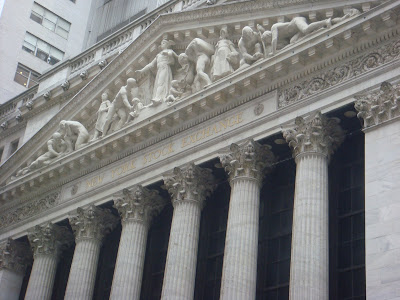Questcor (QCOR), a California-based biopharmaceutical company, is the manufacturer and provider of prescription drugs for the treatment of rare central nervous system and inflammatory disorders. The firm's lead product, H.P. Acthar Gel, is a natural form of adrenocorticotropic hormone (ACTH) approved for the treatment of acute exacerbation of multiple sclerosis and for diagnostic testing of adrenocortical function, among other indications. Interestingly, the drug has also been commonly prescribed off-label for use in infantile spasms treatment, for which the company is requesting official marketing consent from the FDA which will make the final announcement on June 11, 2010.

P/E ratio: 24.2x
EPS: 0.42
Price to Book ratio: 7.1
Return on Equity: 34.1 (one of the highest in the industry; industry avg: -3.9)
Net Profit Margin: 29.4% (industry avg: -82.5%)
Shares outstanding: 62M
Floating shares: 55M
Infantile Spasms
Infantile Spasms (IS) is a serious form of epilepsy, or seizure disorder, occurring during infancy and childhood. IS is life threatening and is seen in ~0.03 to 0.05% of live births. Physicians consider IS to be one of the most difficult types of seizures to treat. Due to its efficacy, Acthar Gel is used by many child neurologists for IS treatment based on the guidelines published by the American Academy of Neurology and the Child Neurology Society.
H.P. Acthar Gel
H.P. Acthar gel a natural form of ACTH, a 39-amino-acid peptide hormone that has been considered as the first-line treatment option for IS. It works by reducing the deregulated firing of neurons in IS through a direct and/or an indirect mechanism.
ACTH is supported in practice guidelines coauthored by the American Academy of Neurology and the Child Neurology Society, and it is regarded as “probably effective” for the short-term treatment of infantile spasms, which is the most strongly stated recommendation in the guidelines. As a result, even without formal clearance by the regulatory agency, Acthar is already broadly used by physicians to treat IS. However, for years, QCOR has been seeking the FDA's approval, which will help standardize care and offer specific dose guidelines.
FDA's Stance So Far
In the meeting with the FDA's advisory panel on May 6, 2010, it was agreed upon among a group of medical experts that Acthar was safe and effective as a treatment for infant spasms. The vote for supporting Acthar's efficacy in treating spasms in infants was 22 against only 1 objection. However, they did not reach consensus regarding the management and reversibility of the drug's complications. Side effects may be serious and may include infection, convulsions and hypertension, but many parents present at the gathering said that it was worth the risk against possible brain damage and developmental delays from the seizures themselves.
Acthar was originally acquired from then-Aventis Pharmaceuticals in 2001 and the first round of QCOR's request for marketing approval in 2006 was unsuccessful. The company insists that earning FDA's support is crucial in making dosing information as well as other information on side effects accurate and consistent for doctors and parents. In addition, FDA's clearance will allow the company to legally market the new use of the drug.
At the meeting, FDA's panel of outside advisors, many of whom already use Acthar for their infant patients, said that the data was compelling but more follow-up safety information was needed.
QCOR executives reiterated decades of successful Acthar use in infants with such seizures. Furthermore, > 30,000 babies have received the drug for spasms since the drug's approval and about 40% of all infants with such epilepsy were treated with Acthar in the last two years.
The only other FDA-approved treatment for infantile spasms is vigabatrin, sold under the brand name Sabril by Danish drugmaker H Lundbeck A/S (LUN.CO). However, according to QCOR, the rival product has a low success rate and that patients need other options. Another drug also prescribed off-label for IS treatment is prednisone.
"Even though the data isn't perfect, there was nothing that was unexpected in terms of of the side effects," said panelist Samuel Frank, a neurology professor at Boston University and the panel's acting consumer representative.
QCOR's IS drug candidate is priced at $23,269/vial and an average total treatment cost is ~$100,000/patient (~4 vials). When asked about the high price of the drug, the company's Chief Science Officer David Young said that it is necessary to maintain the complicated manufacturing process, but that the company works with various groups to ensure patients can obtain the drug, many at no or low cost.
The FDA is expected to hand out the final decision by June 11. The opinion usually, but not always, follows its panel's advice.
Trading Strategy
Despite the close proximity to the decision date and the previous hike in stock price, I believe there is still room for a final phase run-up, which should carry the price even higher to $12, even $14. Would recommend buying at around $9 to $9.50 and heading for a quick exit.
Disclosure: Long QCOR








